A short poetic yet profane notion about what the Oak tree can teach us about living with grace through burden.
This Codex is an excerpt from "Book of Wonderful Suffering" by J. W. Phipps
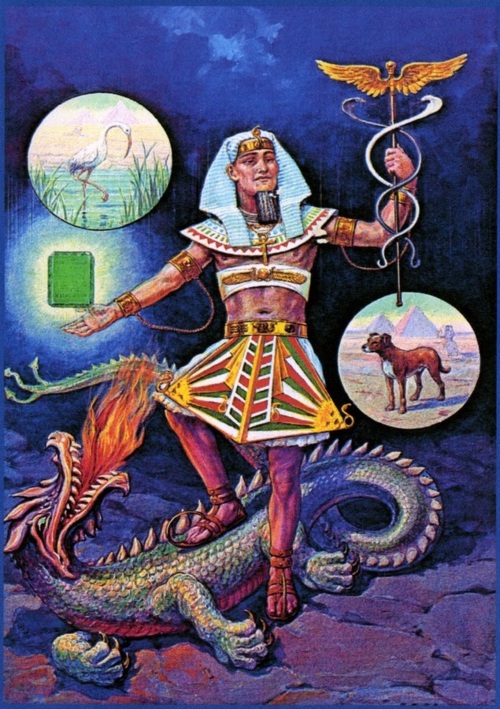
Wikipedia of Hermes: Uncertain origin; usually linked to ἕρμα (hérma, “heap of stones”), itself of non-Indo-European substrate origin or from Proto-Indo-European *ser- (“to bind, put together”). Beekes instead suggests a Pre-Greek origin.
The earliest form of the name Hermes is the Mycenaean Greek *hermāhās,[14] written 𐀁𐀔𐁀 e-ma-a2 (e-ma-ha) in the Linear B syllabic script.[15] Most scholars derive "Hermes" from Greek ἕρμα (herma),[16] "stone heap."[17]
The etymology of ἕρμα itself is unknown, but is probably not a Proto-Indo-European word.[14] R. S. P. Beekes rejects the connection with herma and suggests a Pre-Greek origin.[14] However, the stone etymology is also linked to Indo-European *ser- ("to bind, put together"). Scholarly speculation that "Hermes" derives from a more primitive form meaning "one cairn" is disputed.[18] Other scholars have suggested that Hermes may be a cognate of the Vedic Sarama.[19][20]
Debroy, Bibek (2008). Sarama and her Children: The Dog in the Indian Myth. Penguin Books India. p. 77. ISBN 978-0-14-306470-1.
Beekes, R. (2006) Etymological Dictionary of Greek p. 600
Excerpts from Hermes entry on Wikipedia
Recalling etymology of crocodile: crocodiles (from kroke meaning pebble and drilos meaning worm, describing the animal’s skin).
Gods and Goddesses, Meaning of Words
In mythology, the Phoenician God Hermes was known by the Greeks and Romans as Mercury. He is credited with the invention of Hermes 4the fine arts,’ of the lyre, of medicine, of letters, of commerce, of magic, and of wrestling. The ancient Egyptians version of Hermes was known as Thoth, who was also the inventor of writing, magic and the arts. He is sometimes referred to as the trickster, and in the Iliad he was called “the bringer of good luck,” “guide and guardian”, and “excellent in all the tricks.” Hermes is also known as an inventor of fire, god of commerce and profit.
The confusion, or multitude of various character aspects to the God Hermes is primarily due to both the mythological creations by various authors such as Homer who attributed secrets, or their own perceptions to his character, and also the many authors who have also done the same. Fast forward 3,000 years to today and thousands of stories later, and we now have the end result being about 100 different meanings for this God.
Over the course of my research during the last several years, I have come to realize that if you want to find the true meaning of any subject, myth or God, you have to begin by studying the actual etymology of the words used to name that which you seek to understand. Another rule I have, is that you cannot be placed under a spell by those authors who spell and entrance their words and works into your head, without doing your own type of magical spelling to make sure you do not become spell bound.
Hence, don’t be tricked by the trickster…….

THE ETYMOLOGY OF THE NAME HERMES (HER-MES OR KER-MES)
In the etymology of the name Hermes, who is sometimes referred to as Hermon (Herm-On); we find the true secret ancient meaning to his name. Not a plethora of explanations by a thousand different authors, but a simple singular meaning based on common sense and using the science of words that today we call etymology; and if you are studying Greek or Phoenician myths and teachings, you need to use these same languages they speak to discover the true meaning like that of Hermes. You then take these meanings and make connections in their history, customs, and traditions to make sense of the ancient secrets that lie behind the darkness of the veil of Isis in order to see the light.
In the ancient Hebrew/Phoenician language, K and H are but one and the same letter. Therefor, Hermes can be spelled as Kermes, and it is from this sacred name of Kermes where we find the hidden true connection to the word worms, magic, purple, profit and the God of commerce. In Arabic, hermes is spelled kermes; in French, kermès; Old Irish, cruim; Italian, chermes; Lithuanian, kirmis; Albanian, krimp; and Spanish, carmes. In Sanskrit, krmi-ja is a compound word meaning “red dye produced by a worm.” It is said that a worm spelled krmih grows fat (Vmid) on raw flesh (kravye), or it may be derived from (the root) kram, meaning to creep, or from krdm (to crawl).
All throughout the region around the Mediterranean Sea, Levant and southern Europe, you will find a species of worms called kermes that live on a unique type of oak tree called the “kermes (hermes) oak (quercus coccifera),” and in England they are known as the British oak.
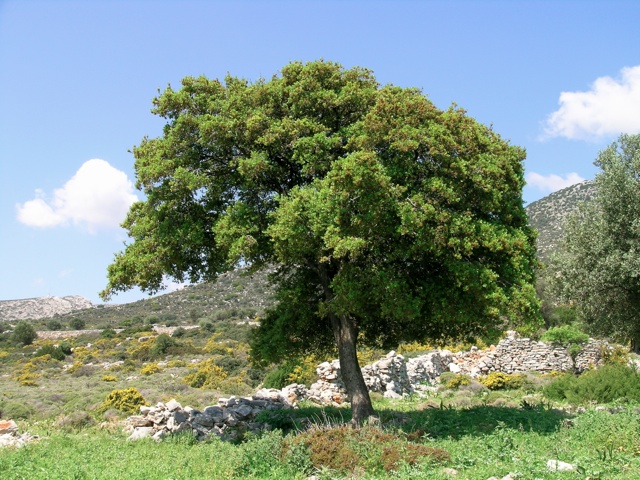
Kermes Oak
The dye is harvested from pregnant female kermes worms, which look like small red peas and that can be found attached to the trunk and branches of the “kermes oak tree.”
Kermes oak worm
This dye was often called in commerce ‘hermes.’
The etymology of quercus coccifera, the specific name ‘coccifera,’ is related to the production of red cochineal (crimson) dye and is derived from Latin, coccum; which was from Greek κὀκκος, the kermes worm. The Latin -fera means ‘bearer’. Hence, instead of Lucifer the light bearer, we have kermes (worm) the purple bearer.
The symbol of Hermes also has the word ker. In Greek, his symbol is called the kerykeion (ker-y-kei-on), and today it is known primarily by the Latin word ‘caduceus,’ with the two serpents/kermes/worms intertwined around a winged staff.
This is why oak trees, cities, statues, and symbols of Hermes can be found wherever the Phoenicians had sailed, traded and conquered with their billion, and quite possibly trillion dollar worm, purple, silk, medical and other goods that they had monopolized in order to become the Sons of the God of Commerce. In order to honor this fact, the Phoenicians had created the God Hermes represented in human form as a beautiful young man who made his way around the world with his winged hat, and winged shoes holding his ker-ykeion or caduceus. After all, he was the worm God Ker-Mes who helped make the Phoenicians one of the most powerful people, who built their empire with the help of a worm who happened to produce a beautiful purple dye.
THE MYTHOLOGICAL MEANING OF HERMES (KERMES)
The mythological meaning of Hermes (Kermes) is found in studying the Greek meaning of the compound word that is composed of the two words Her or Ker, and Mes (Her-Mes or Ker-Mes). The Greek meaning of the work Her or Ker is destruction, death and fate. In Greek mythology, the Keres(Κῆρες; singular: Ker Κήρ) were female death-spirits. According to a statement of Stesichorus noted by Eustathius, Stesichorus “called the Keres by the name Telchines”, whom Eustathius identified with the Curetes (Kuretes or Ker-re-tes) of Crete, who could call up squalls of wind and would brew potions from herbs (noted in Harrison, p 171). In the fifth century, Keres were imaged as small winged sprites in vase-paintings adduced by J.E. Harrison (Harrison, 1903), who described apotropaic rites and rites of purification that were intended to keep the Keres at bay.
The Greek word hermeneus (ἑρμηνεύς ) means interpreter, reflecting Hermes’s function as divine messenger with his winged hat and shoes which would be akin to the angelic being with wings in Christianity. It can be found the word cherub, or more appropriately, ker-ub whose meaning is an order of angelic beings, or should I say angelic worms or Hermes. Here is an image below of the God Hermes with the Goddess of War. He is depicted as an angel or more appropriately, a fallen angel …
Hermes
The second word in Her-mes is ‘mes.’ The meaning of the word mess is middle or intermediate, and fits perfectly with Hermes as the interpreter, or second messenger or God. The meaning of the word Her or Ker we have already identified is destruction, death and/or fate. This definition would go in line that when one is infected with the Kers or Hers, their fate, or mes is sealed by the middleman that resides in their bodies who we know has the winged spirit or God Hermes, or should we just say Worms?
As it is said in the Hebrew Bible in Exodus; “the worms that the manna (man) bred (flesh) were of this nature; “Man that is a worm (Hebrew: rimmah), and the son of man which is a maggot” (Hebrew: tole’ah),” or in Job 25: 6“How much less man, that maggot, And the son of man, that worm!” Hence, “They shall move out of their holes like worms of the earth,” signifies rather ‘creeping things,’ or ‘ serpents.’ – Micah (vii. 17)
I have written many articles about the Holy Island of Crete, worms, and also the ancient priesthood who were called by many names such as the Priests of Pan, Telchines and the Curetes (Kuretes or Ker-re-tes). It is this history and names such as the Ker-et-es, that we can find the same word of Ker, that is the same word that makes up the name of Hermes who we now know the legend of Hermes originated on Crete which was the product of this very same priesthood.
Hermes is sometimes referred to as Hermon (Herm-On), and you will find that he was born at Mount Hermon which is the same mountain on the same Holy Island of Crete where his father Zeus was also born. Manly P. Hall had said that Hermes was known to the Jews as “Enoch.” Today it is known as Mount Ida, but biblically as Mount Hermon where in the Book of Enoch, is the place where the Nephilim fell. On Mount Ida there is a cave where Zeus was said to be hidden, and the infant God placed in the care of the priesthood of the Ker-et-es as well. The French Occultist, Eliphas Levi had written; “The fallen angels gathered around their chief, Samiaxas, on a high mountain, which has been called ever since ‘the mountain of the Oath’, for the Eggregores pledged themselves there one to the other with a sacrilegious vow.”
Here is an image below that depicts this sacrilegious vow of Hermes and a merchant showing the God of Healing and Truth, Asclepius disapproving Hermes. Also shown as the three naked Graces Meditrine, Hygeia and Panacea.
Hermes and Asclepius
In the word Hermon, we get the compound meaning with the word ‘On,’ which is “a state of being, or power supply.” Therefor the worm named Kermes, when referred to as Kerm-On, is an angelic source of earthly and spiritual power for the Phoenicians which will become more than evident to you with in my next article “Hermes the Billion Dollar Worm God.”
It was on ‘the mountain of the Oath’ on Mount Ida where Pythagoras was initiated into the secret mysteries by the priests (Levites) of the Idaean Dactyli (Judeans and Tribe of Judah), by whom he was purified with the meteoritic thunder-stone in the cave of Zeus on Mount Ida in Crete; also known as the original Mount Zion, and mountain of the Oath of the Brotherhood who made the sacrilegious vow.
Mount Ida
These priests, and people were the fallen ones who turned away from their God in order to make many more Gods, Idols, symbols and sacrilegious vows to the materiality of commerce, war, and conquest. This would indicate the covenant and vows of the Nephilim made at Mount Zion. Those that fell…
Where do you see the symbol of Hermes today?
Caduceus Heremes staff
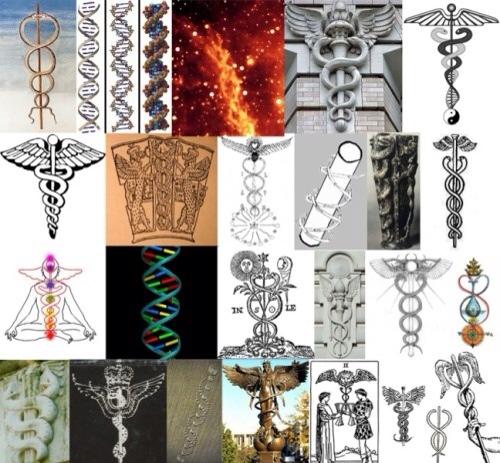
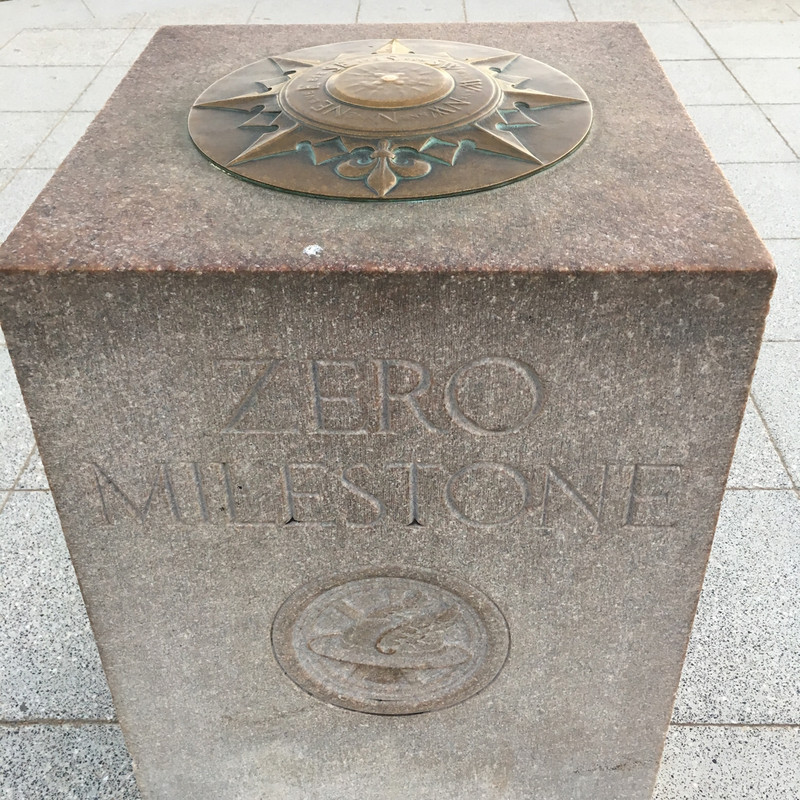
Zero Milestone Washington District of Columbia
When this marker was dedicated on June 4, 1923, it was expected that it would be the milestone from which all road distances in the U.S. would be reckoned. Obviously people in places like Oregon and California didn't like the idea that their road markers would begin and end in the 3,000s, and the idea was scrapped. Now the Zero Milestone only anchors roads distances in Washington, DC.
It's an inscribed granite block, set inside a big brass compass on the sidewalk, about four feet high. It's popular with tourists who rest their cameras on it to take pictures of The White House, but who are otherwise oblivious to its purpose.
Excerpt from Source
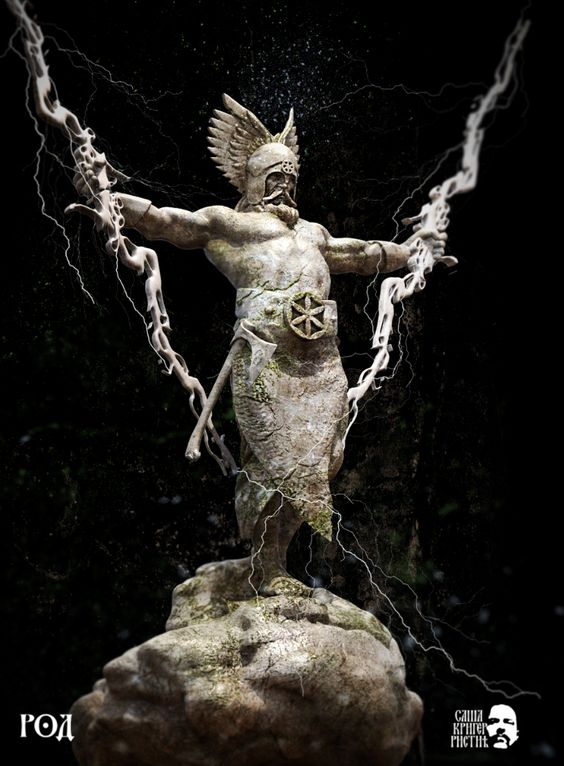
In Slavic mythology, Perun (Cyrillic: Перýн) is the highest god of the pantheon and the god of sky, thunder, lightning, storms, rain, law, war, fertility and oak trees.
Etymology
Main article: Perkwunos
Perun is strongly correlated with the near-identical Perkūnas/Pērkons from Baltic mythology, suggesting either a common derivative of the Proto-Indo European thunder god (whose original name has been reconstructed as *Perkwunos), or that one of these cultures borrowed the deity from the other. The root *perkwu originally probably meant oak, but in Proto-Slavic this evolved into *per- meaning "to strike, to slay".
The Lithuanian word "Perkūnas" has two meanings: "thunder" and the name of the god of thunder and lightning. From this root comes the name of the Finnish deity Ukko, which has a Balto-Slavic origin.
Artifacts, traditions and toponyms show the presence of the cult of Perun among all Slavic, Baltic and Finnic peoples. Perun was also related to an archaic form of astronomy – the Pole star was called Perun's eye and countless Polish and Hungarian astronomers continued this tradition – most known ones are Nicolaus Copernicus, and Franz Xaver von Zach.
Excerpts: Wikipedia entry Perun
